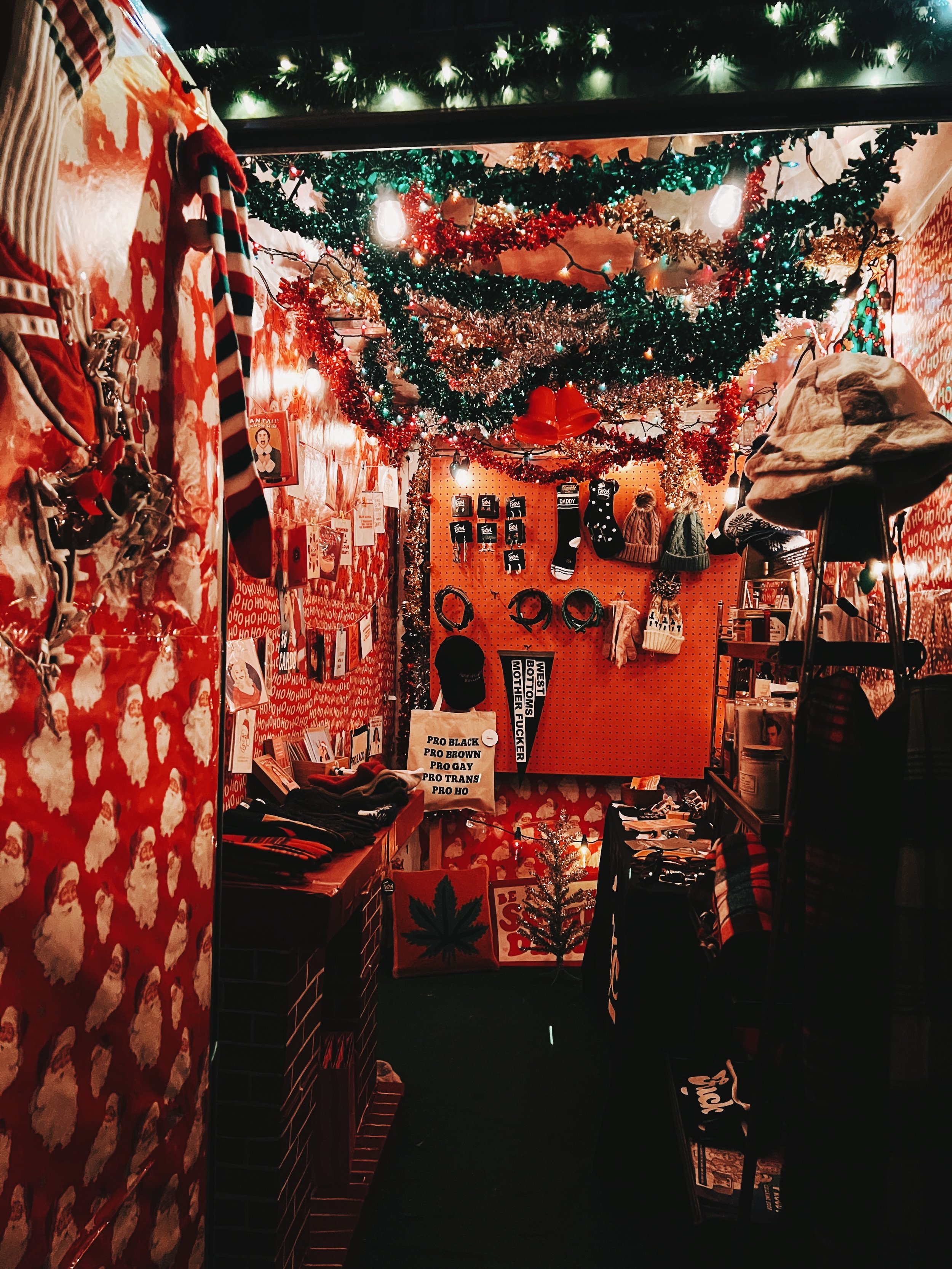Café Corazón Is Cooking Up Breakfast & Lunch
Breakfast and lunch served with a side of education
Photos by Tyler Shane
Café Corazón embodies the idea that there is no “one way” to be Latin. From empanadas and alfajores to horchata lattes and yerba mate, the coffee shop proudly serves food and drink inspired by various Latinx and Indigenous backgrounds. The owners of the café are husband and wife duo Miel and Curtis Herrera. Miel is of Argentinian descent and Curtis is Native American (Mescalaro Apache) and Mexican. They recognize that Latins do not fit into one box, despite what our demographic surveys may suggest.
The family-owned business opened their second location in the Crossroads Art District in March. The Crossroads shop stands in contrast to their original Westport location with its incredibly spacious interior. Nevertheless, the extension of the Café Corazon brand continues to exude Latinx pride with its vibrant colors and lively atmosphere. Along with the café, the food menu has expanded serving common coffeeshop fare such as sandwiches, burritos, and salads – but with a Latinx and Indigenous twist.
Keeping it in the family, Chef Terrance Herrera is the owner’s nephew and boldly embraced the task to educate the people with his dishes. The food, like the culture, is colorful and full of flavor. The Taos breakfast burrito is a hefty familiar dish stuffed with eggs, potatoes, pinto beans, onions, and more. The complimentary homemade Hatch chile sauce is deep, smokey, and mouthwatering. Give a wink to Taos, New Mexico and ask for the burrito to be served “Christmas style,” meaning topped with both red and green Hatch chile sauce.
The Hispanic delicacy, the tamale, is seriously elevated with beans, chile sauce, and topped with your choice of egg. Nopal (cactus) is incorporated in a classic egg sandwich giving it a hint of sweet along with the savory. Argentina is represented with the Choripan sandwich which consists of sausage accompanied with a bright chimichurri spread, roasted garlic aioli, and pickled red onions. Many ingredients are locally sourced.
While some menu items are more familiar, the café embraced the challenge of serving menu items influenced by Indigenous and Native American culture. A special salad was created to pay homage to the Native agricultural practice of growing corn, squash, and beans together, a practice referred to as the Three Sisters. Native Americans recognized the benefits of cultivating the three vegetables within a group. The corn stalks provide the beans height to grow and the large squash leaves give shade and fight off weeds. The vegetables are extremely nutritious when grown in this technique and have become a staple trio within the Native diet. Café Corazon’s tribute to Native expertise manifests as the Three Sisters Salad, comprised of corn, squash, and black beans tossed with arugula, a light vinaigrette, and dollop of hummus. A light meal with deep roots.
For the savory lovers, Lupe’s Bison Ricen is a creamy mushroom and bison meat sauce paired with Kansas wild rice. The dish was created in honor of Lupe, a Native friend of the café and innovator of the meal. The bison is sourced from KC Buffalo Co. Looking for something cozy and filling? The Frito Pie and Papas y Chile (potatoes, chile, and cheese) are the ultimate comfort foods.
Education is served as a side to every meal with each menu item recognizing a particular story within the history of Latinx culture. Every nook and corner of Café Corazón serves as a shrine to Latinx and Indigenous innovation and creativity. When patrons walk into the Crossroads location, they are immediately confronted with a large brightly colored mural depicting an Indigenous woman, her gaze meeting the eyes of those who stare at her in awe. The Aztec calendar serves as a halo behind her head and her arms extend towards the sky holding coffee, corn, and cacao in her hands. Despite her offerings, the muse appears withdrawn, not quite enthusiastic to share her gifts, her culture’s delicacies, with others. Her steadfast gaze and hesitant yet prideful disposition are in recognition of the ultimate pillaging of her land, people, and culture. She is unquestionably aware of the history of injustice of her people. She holds her gifts, her people’s essence and soul, close; willing to share but not without educating. The mission of the café, to educate and proudly reclaim history, is staring at you when you walk through the doors. The mural is a confrontation but also a welcome sign – an offering to sit down with some great Cafecito and exceptional food - to discover and learn about the many ways of being Latinx.












